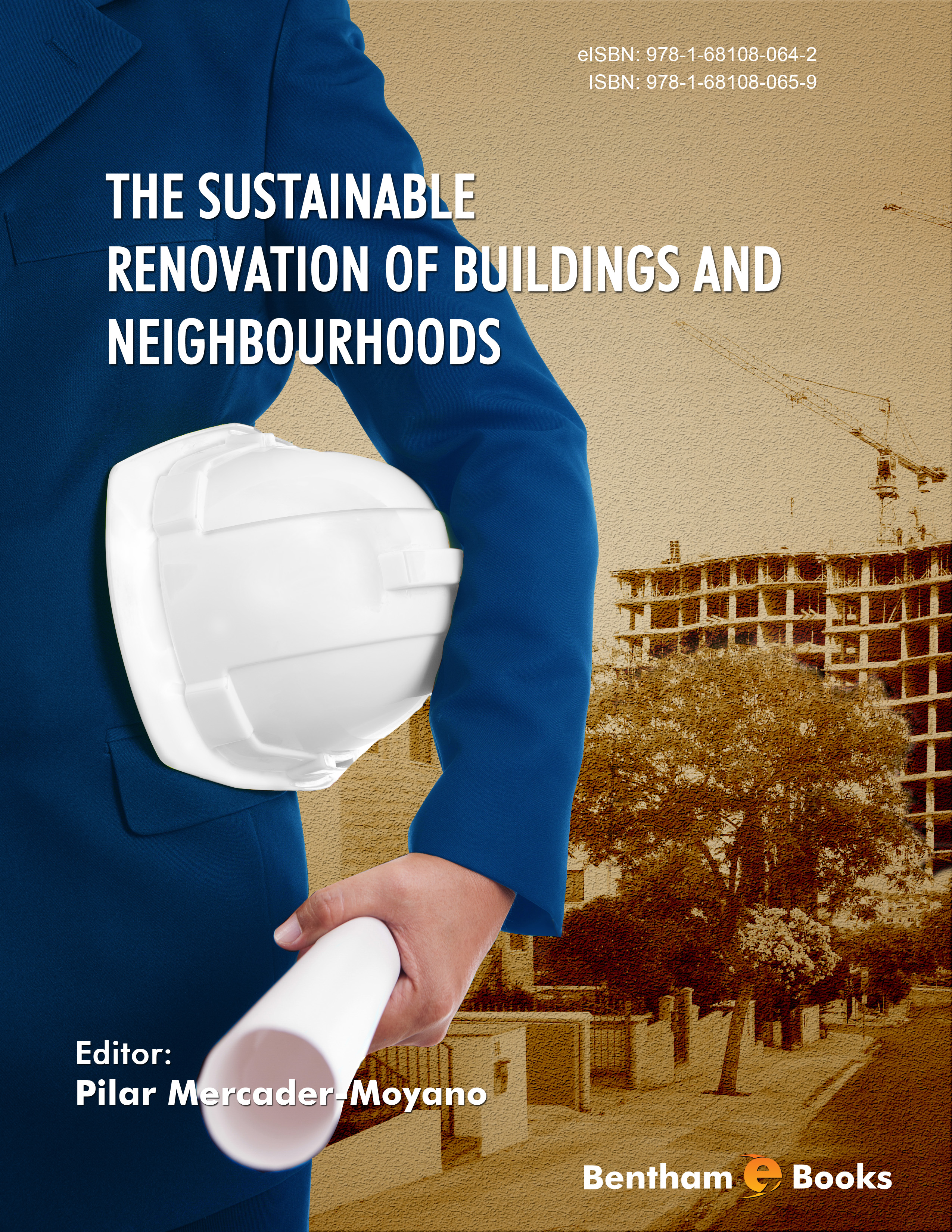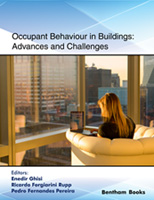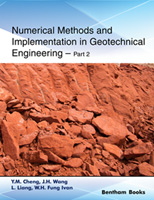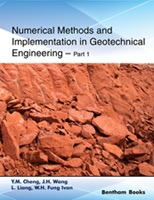The eco-efficient refurbishment of buildings and sets of building forming neighbourhoods have become a new paradigm to the building agents. It seems that the numerous messages which constantly reiterate the need to go deeper into the development of Eco-Efficient solutions, to make the development being sustainable, have taken hold in the new generations of researchers and technicians.
One of the fruits of this new situation is the II International Congress on Sustainable Construction and Eco-Efficient Solutions, which has as a precedent four national editions, attending researchers and technicians, stimulated by the continuous messages received from all the angles, and who are convened to these forums to show their ideas.
The prestige achieved by the Congress on Sustainable Construction, by the quality of the communications presented on previous occasions, has driven to this edition’s Scientific-Technical Committee to make an extraordinary effort to select the best papers presented, through a blind-peer review process, thereby elevating the scientific quality of the Congress.
The great quality of the communications presented has allowed to highlight six of an excellent value, linked to the Eco-Efficient Buildings and Neighbourhoods Renovations.
CHAPTER 1: Energy Retrofitting for Social Housing by Improving the Building Envelope: Madrid 1939-1979.
This piece of work is part of a study about the improving possibilities in the constructive systems of vertical exterior walls in social housing in Spain, with two parallel objectives: to improve the environmental quality inside the dwellings, and to improve its energy efficiency.
The increase in the environmental requirements for buildings, and particularly with the requirements of energy savings and efficiency, makes necessary the study of the improvement potential of the different construction systems. A good façade design, adapted to local constraints, such as climate or solar access, is key to guarantee the habitability, as well as to reduce the environmental impacts.
Actions in vertical exterior walls, apart from improving the energy performance, will allow to renew and improve other kinds of necessities, such as the image of the building, with a consequent positive impact at a neighbourhood scale. The implementation of energy improvements can also be sustained in other necessary actions, like maintenance works or repair works, so the costs are optimized to different actions.
The improvement of the dwellings habitability is sought as an objective, as well as the reduction of the environmental impacts in the life cycle of the construction systems. In both cases, the façade plays a leading role.
CHAPTER 2: Environmental Impact Indicator System in Residential Neighbourhood Renovation
There is a specific urban tissue in Spanish cities which is the open-block neighbourhoods, built from the fifties to the end of the seventies, based on open building typologies. These neighbourhoods, or “barriadas”, have inherited a state resulted from the important quantitative needs of existing housing at the end of the wars of the mid twentieth century: work processes within the short execution, reduced costs, poor and emerging industrialized production and comfort standards completely away from today’s minimum required demands.
Within these neighbourhoods, the research focuses on those whose design is the result of the repetition of one or more residential typologies of collective housing. As a response to this situation, the research proposes the evaluation and minimization of the environmental impact produced by these fabrics in the cities, to identify the key areas that contribute to make their environmental rehabilitation.
This magnificent work proposes an indicator system which focuses on these areas responsible for the imbalances produced in the urban ecosystems, which is based on an exhaustive study of the current system, to the urban level and also to the building level. As a result of the study, a new indicator system is developed, being adapted to this specific reality.
CHAPTER 3: Approach to the Definition of Nearly Zero Energy Buildings, in the Social Housing in Europe.
This chapter presents the results of the Power House NZEB Challenge project. The primary objective of the project is to transfer and exchange experiences between different countries about the design of types of buildings, and inform to political lawmakers about the results. The project is studying thirty different buildings by following the optimal cost methodology. This chapter presents one of the study cases from Spain, showing the results of applying the methodology of the optimal cost, which allows to identify those technical solutions with the higher economical profitability considering the global cost of the next 30 years. The knowledge generated will help to define the NZEB concept and will be useful as a guide for the Member States on the elaboration of the regulatory and financial framework; to assure that energy transition is inclusive and socially, economically and environmentally sustainable.
CHAPTER 4: Development of an Assessment Tool for Building Envelope Retrofit Based on Environmental Indicators.
In this work, it is confirmed that we are attending a wide change in the sector, which aims to achieve a cultural change which transforms the repair objective into a deeper one about sustainable management of the buildings, in which the active prevention, conservation and maintenance improve the quality of life of their inhabitants and reduce their use costs.
To that end, there are proposed tools that provide reliably significant indicators related to the building sustainability. Thus, the main objective of this work is to define an evaluation model of the environmental impact related to the energy rehabilitation of the building envelopes, to be able to assign a rating by recognizable indicators of sustainability.
The evaluation model defined allows to assign values to the indicators: CO2 emissions, energy consumption, drinking water, generation of dangerous waste and non-dangerous and maintenance costs. Besides, it provides a scale that allows to relate the impacts in all the phases of the building life cycle.
CHAPTER 5: A structure for the Quantity Surveillance of Costs and Environmental Impact of Cleaning and Maintenance in Buildings.
The pause resulted by the paralysis of the sector gives an opportunity to reflex the considerable size of the costs produced by the maintenance of the buildings constructed.
Among the maintenance labours, the cleaning leads from the rest of the volume of work and frequency it requires. Although it has also been a great impact in residential and public buildings, the cleaning takes on maximum importance in hotels, where it becomes an essential work, on which depends the progress of the business.
In this area, the frequency with which each activity is performed grows exponentially, leading us to consider: how much they cost and how much environmental impact these works generate along the life cycle of the building?
To solve this problem, in this paper, price development is proposed which compiles the costs and environmental impact of the cleaning works, being the costs based on the guidelines of the Base of Construction Costs of Andalusia (Base de Costes de la Construcción de Andalucía BCAA). To that end, a new chapter is written dedicated to the phase of use and maintenance of buildings, which presents a continuity with the existing Classification System.
Among the prices developed, on the one hand, they distinguished the cleaning of specific elements, and on the other hand, the one of the different kind of stay with a specific periodicity. In that way, when the measure is run, the initial ridiculous costs become considerable amounts of money due to the large number of repetitions.
As an immediate result of this work, the foundations have been laid for the creation of a new chapter of the BCCA with a solid structure.
CHAPTER 6: Management of Living Urban Environments from an Active Ageing Approach. Advances in the Team Research (Re)Programa.
In the near future, we will find a socioeconomic situation with a difficult solution: our city's population and their neighbourhoods will be mainly formed by elderly people, that will live mostly in obsolete dwellings, non-adapted to their housing requirements, with the aggravating factor that they cannot count on the economic capacity to be able to cover the rehabilitation costs of the building where they live.
In this research the objectives, criteria, analysis methodology, evaluation tools and case studies are exposed and analysed by the research team Reprograma in the project entitled “(Re)habitation+ (Re) generation+ (Re)programming. Renovation and sustainable management of the Andalusian building stock. Management of living urban environments from active ageing, gender and habitability approach” funded by the Andalusia Government´s Public Works Agency, between 2013 and 2015. It also shared a result advance, relating the information generated to date.
CHAPTER 7: Energy Efficiency Indicators for Buildings in Argentina.
In this work, a comparative study of energy performance in different types of buildings is made. It analysed three cases of office and three of residential buildings, which are compared with samples of previous researches, looking for correlative or different behaviour in terms of potential energy losses and gains. Then, the indicators and indexes are compared with Argentinean Standards to verify their efficiency level by using the “Energo-CAD” methodology and energy model, based on steady-state balances. While discussing the results of energy audits that show discomfort with high energy demand, which are related to energy breakdown in this country, it is concluded that the indicators employed show clear results, and facilitate the comparison among studied cases. This work ends showing that the sample does not meet the National Standards, even when it is compulsory by law since 2003 in the province of Buenos Aires.
CHAPTER 8: Towards a Sustainable Retrofitting Plan for Social Housing in Mediterranean Europe.
The research is focused on a characteristically Mediterranean city in the south of Spain, Cadiz, in climate zone A3 according to its legislation and regulation context. This research aims to cover the lack of information on the energy behaviour of the existing housing stock, particularly in social housing neighbourhoods built prior to regulations (1940-1980) and the establishment of a Plan for Sustainable Retrofitting of social housing in the city of Cadiz.
In order to implement this plan, the chapter identifies and classifies the main social housing neighbourhoods built in that period, offering a construction and energy analysis of the constructive systems used in the thermal envelope, which has made it possible to classify and establish their degree of obsolescence. This study has provided a global assessment of the energy rating of social housing built in the city in 1940-1980, applied to a map of the city allowing us to view an energy rating map of sorts of the city. This method is essential in order to attain what could be described as an essential first phase towards attaining the priority action goals of Horizon 2020, using global actions with sustainable retrofitting plans for Spanish cities.
CHAPTER 9: New Applications of Ceramic Waste Generated in Building Rehabilitation Works.
This chapter presents the results of a research project conducted to analyze the feasibility of incorporating ceramic brick and tile waste from construction in a plaster matrix, through a study carried out in laboratory and ensuring meeting the current regulations. Results show that it is possible to incorporate up to 25% of ceramic waste over the weight of gypsum without changing its basic properties. Perforated brick waste achieves the best behavior: increases mechanical strengths (31% compression and 29% flexural) and surface hardness (8%) and reduces water absorption around 25%.
Antonio Ramírez-de-Arellano-Agudo
Department of Building Constructions II
University of Seville
Spain





